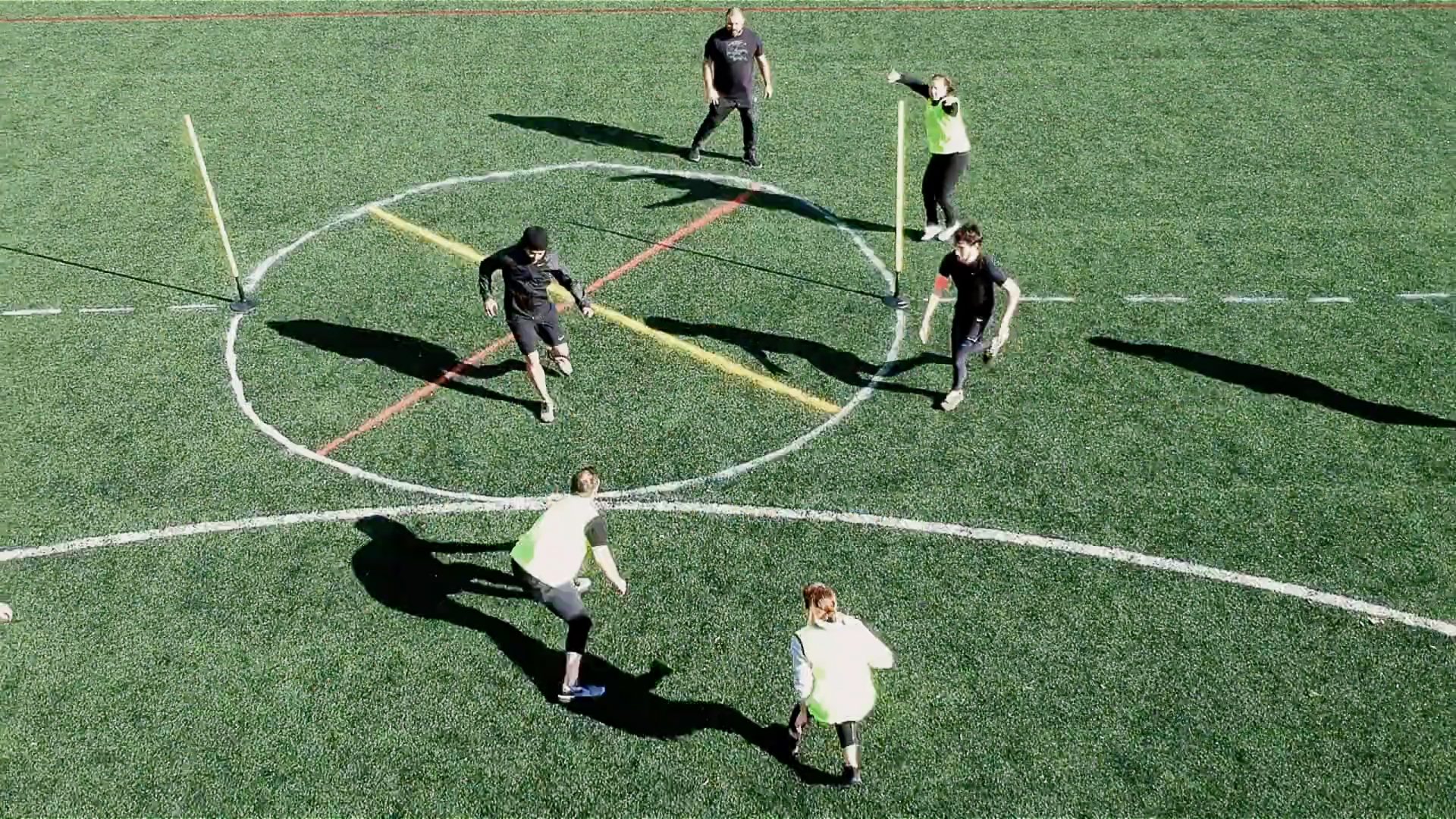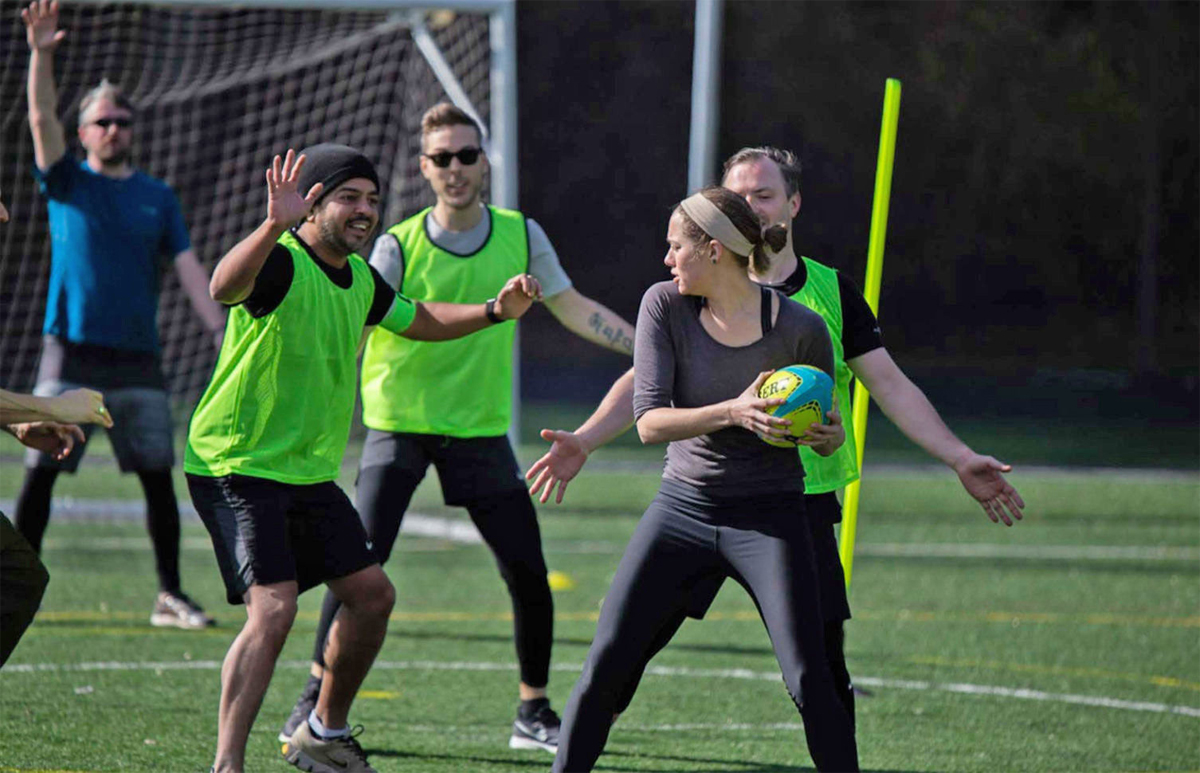How to play Speedgate, the first sport created by AI

The American advertising agency AKQA introduced speedgate - the first sport whose rules are created by artificial intelligence. The algorithm that wrote the rules of the game is based on a recurrent neural network that was trained on textual information about 400 existing sports.
The project was developed during Portland Design Week, so that creative people gathered at exhibitions and conferences had a reason to stretch their muscles. Project head Whitney Jenkins explains that films and musical compositions by neural networks have already been created. And the idea of developing a completely new sport was prompted by their previous cooperation between AKQA and Nike. “We thought: what if we could create a new basketball, a new football?”
The team took a text description of the rules of 400 sports. In total, about 7300 lines with separate rules turned out. Based on these rules, a recurrent neural network (RNN and DCGAN algorithms) created its own: about 1000 descriptions of the rules of sports were obtained. Basically, these descriptions were short and, to put it mildly, “unusual”, so the developers had to figure out whether this could even be turned into a sport.
For example, at first the neural network planned to force people to play "underwater parkour" or "exploding frisbee." Also among the first projects she developed was a sport in which players would pass the ball to each other while in balloons and walking on a rope. Jenkins says:
We better understood the limitations of our sport. We knew that we could not play tens of meters above the ground, and naturally these ideas were complete nonsense. But using AI as part of a creative team, we have greatly expanded our horizons. Based on the ideas of AI, you can get something truly unique.

Gradually, the ideas of the system became a little more meaningful. For example, she issued such a description of the sport as "little volleyball, wrestling on the rink." The team interpreted this as a volleyball game in a small room where you are tied to the floor or you can use physical strength to grab the ball. Another early idea of the car was “two large members, a saddle, a back, the fastest upstairs”. The team imagined people on horses sitting opposite each other on a large log swinging up and down.
The creations of the neural network went through many stages of filtration:
Most of the time we just looked at a huge table, turning our brains and trying to figure out how it might look in real life. This is far from being as glamorous as many people probably imagine working with AI. There were a lot of iterations before the output came out with something clear and, most importantly, interesting.
After processing more than 1000 ideas, AKQA found a description of a suitable sport: simple, good in quality workout and affordable for many people. Further, the neural network came up with all its rules, and the project team could only exclude the most stupid ones from it. The result was a speedgate.

The rules here are quite simple (certainly simpler than, for example, Quidditch). Two teams of 6 people. One ball that you can throw or kick across the field, passing it to your teammates. Only when you hold the ball, you can not move around the field. What makes the game more strategic: running speed is not as important as teamwork and competent passes. One player, even if he is Cristiano Ronaldo, will not be able to lead your team to victory. Another plus, they say in AKQA: it reduces the number of injuries.
The goal of the speedgate is to first pass the ball through the central goal (marked with two sticks). This makes it possible to score a goal. Next, you need to make the ball cross the second goal, which are on the side of the opponent. This will give two points. And if one of the players on your team stands behind this goal, immediately catches the ball, and punches it back through this goal, a bonus point is given (this is called a “rebound”). It’s also quite logical: if you were able to score five of us while one of you was running behind the opponent’s goal, then you’ve done well, and you have the opportunity to widen the gap.

The gates (“gates”, where the name of the game comes from) - without a net, and you can score a “two-pointer” in both directions, the main thing is that the ball passes between the posts. Whitney Jenkins says his favorite generated rule concerns declaring goals:
If a team says that it scored a goal, but in fact it is not, points are given to the opposing team. Apparently, our AI appreciates honesty.
The system did not stop at creating rules. She was also “fed” by 10,400 logos of various sports and teams, of which she generated 6,400 options for speedgate (as a result, they chose one with a characteristic image of the central gate posts). The same method created the slogan, which was already appreciated by the first players and chanted by the first fans. "Face the ball, to become the ball, to be above the ball."
Speedgate Promotional Video
AKQA made the field for a new sport, which they now play every Saturday morning. A full list of rules is available on the site . So far, the goal is to create several teams from various creative agencies and IT companies at Portland Design Week to create a small league. “We played with college athletes, with children, with children against adults,” Jenkins says. “It's simple and fun, a good morning workout that also strengthens the team spirit. Everyone loves speedgate. ”
And how would you play? Or is football better?

